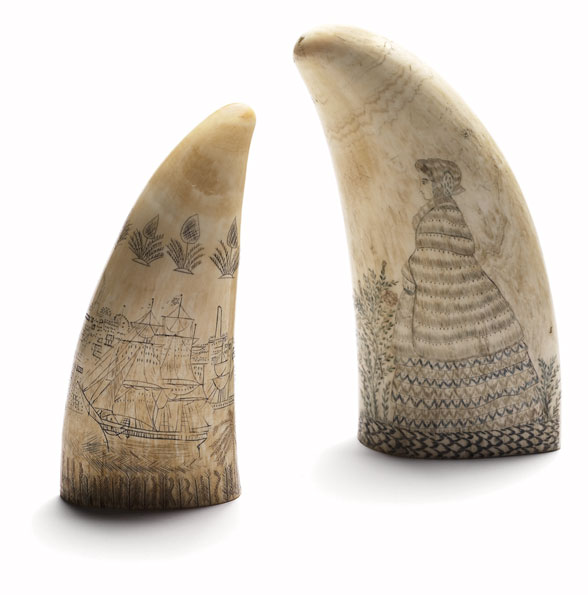 Two scrimshaw pieces, c1840 and c1860
Two scrimshaw pieces, c1840 and c1860
TLF ID R4230
These are two pieces of scrimshaw made from sperm whale teeth by unknown artists. Designs have been incised into the teeth and filled in with black and coloured inks. The piece on the right was made in around 1860 and shows a woman in a crinoline - she wears a hat and a patterned coat and dress. She stands on a decorated border and is flanked by shrubs. It measures 19 cm (height) x 10 cm (width) x 8 cm (depth). The piece on the left depicts a tall ship with sails hoisted, with a port in the background. Above and below the central image are bands of decoration featuring plants and possibly leaves or feathers. It was made around 1840 and measures 15 cm (height) x 7.5 cm (width) x 5 cm (depth).
